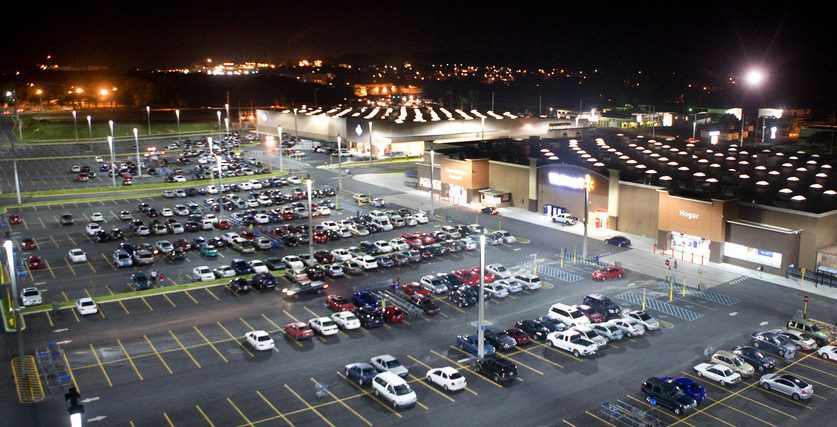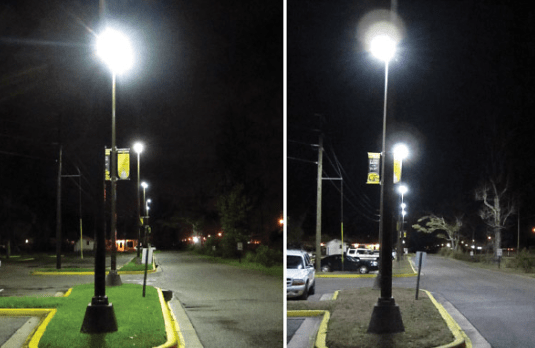There are many things to consider when it comes to parking lot lighting. But you cannot truly know what you are dealing with unless you are familiar with the anatomy of a parking lot light fixture. What makes a good parking lot light? What are the elements that are needed? Here are a few elements to look for in your own parking lot lights.
Brightness Requirement
As a lamp, one of the most important elements has to be the brightness. If the light is too dim, it can cause problems in your parking lot, namely poor vision for drivers and pedestrians. This can also hinder your security cameras from seeing details of your customers (such as license plates and clear faces). The lighting in your lamps is measures in a term called “lux“. In general, the light levels of an average parking lot should be at least 50 lux. For commercial parking lots, the lux requirement is even higher at 200 lux. For each 100 square meter space, that requires 200 lux, which means it will take around 2000 lumens to illuminate the area. LED lights can efficiently light up with an efficiency of 120 lumens per watt. That means it costs only 150 per LED for the entire parking lot.
Standard Uniformity
Another important element of parking lot lighting is standard uniformity. What this means is that all the lights in your parking lot has a uniform brightness. This is better for drivers and pedestrians because there are no uneven lights on the ground. This promotes better visibility, especially at night. You can measure the uniformity of your parking lot lights by calculating the ratio of the maximum and the minimum lux. Or the minimum to average lux of the total space. If a parking lot has 50 lux as the lowest brightness in the lot, and 200 as the brightness, then you can get the uniformity by dividing the highest by the lowest.
Light Mounting
How the light is mounted can be an important factor in determining the efficiency of your parking lot lights. The most common mounts are slip fit mounts and wall mounts. Slip fit mount lighting fixtures can be adjusted and the tilting angle can be changed after it is installed. Wall mounts, on the other hand, cannot be moved once installed. Wall mounts are usually installed when lighting poles are not available.
Color Temperature
Color temperature has nothing to do with the actual color of the light but spectrum of the light, whether it is giving off warm colors or cool colors. These can affect visibility as well as power consumption. This can be measured by the color temperature. 5000k represents cooler white lights, while 3500k has more of a yellow color. The white light is more secure, while yellow light is better to see in a foggy area.
Photosensors
One of the best features of modern parking lot lights are photosensors. These determine the brightness and darkness of an area. When it gets dark enough, it will automatically turn on the lights. This saves you a lot of money, because the lamps will not go on after a specific time, but rather at a time when they are needed. Most of the lighting fixtures that have these sensors are placed on top of the lights. But these sensors should be cleaned from time to time to avoid dust and debris blocking the passage of light.
Anti-glare
Most modern parking lot lighting will also feature anti-glare. There are LED products that have anti glare features because there is a lens that covers the lamps which then directs the light to certain areas. This means the light will not be blinding even if you look directly at the light source. This is important, particularly in parking lots, because you do not want to compromise the vision of your drivers with glaring lights from parking lot lights.
Minimal Light Pollution
Light pollution occurs when lights are projected in areas where they are not needed in terms of visibility and safety. The parking lot lighting should be enough for the drivers and pedestrians to use it, but it should not exceed the parking lot and spill over to other buildings or surrounding areas. This can be addressed by adding a light shield around the outer perimeter of the parking lot.





